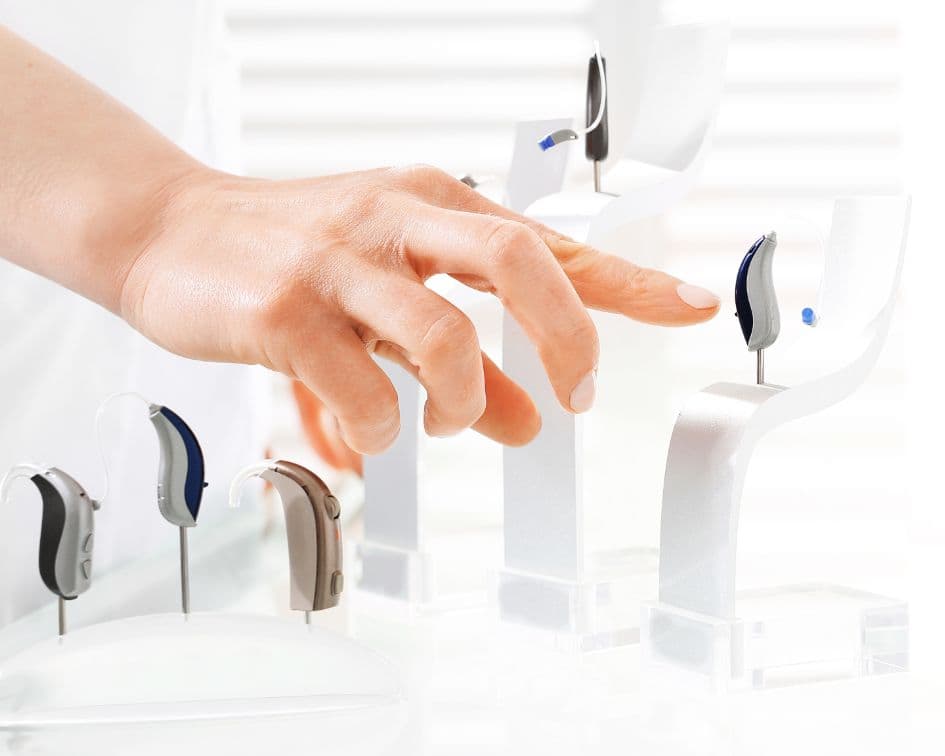You may have thought about getting a hearing aid but are concerned about how it will appear or whether it will help you.
Almost all hearing aids work by amplifying sounds from their environment and transmitting them into your ear. Both traditional hearing aid batteries and rechargeable hearing aid batteries are available today.
These devices use mics to pick up sounds in the environment. Incoming sound is converted to digital code by means of a computer chip and amplifier. Adaptive sound analyzes your hearing loss and listening needs and adjusts the sound depending on the surrounding noise.
There is a large demand for hearing aids that are discreet, so designers continue making smaller models. However, you may not be able to achieve the improvements in hearing you may need with the smaller aids. So there is a trade-off. This is why working with us at Hearing Associates of Las Vegas is so critical. We will help you get the fit and the high-tech capabilities you need.
What to Look for When Choosing a Hearing Aid
There are two basic types of hearing aids: in the ear (ITE) hearing aids and behind the ear (BTE) hearing aids.
There are many different styles within these groups that feature various benefits and sometimes drawbacks, so it is always best to consult a professional when making a decision.
Your hearing care professional will take an impression at your hearing aid consultation so that your ITE aids are properly fitted. There are usually a few skin tones to choose from to match the outer ear.
The batteries for most ITE or BTE devices require replacement from 3 to 20 days depending on the device. These batteries are increasingly being replaced with rechargeable ones.
Oticon has the world’s most powerful hearing aid for severe hearing loss. Their styles of hearing aids provide a 36-degree hearing experience, which will let wearers hear more speech more clearly without much effort.
ITE Hearing Aids
ITE (in the ear) hearing aids are typically worn in the ear canal and are custom-fitted based on the impression. Some ITE hearing aids go deep into the ear canal, while others may be closer to the outer ear.
Invisible in the Canal (IIC) instruments are the smallest in the market, with an inconspicuous position inside the ear canal, just past the second bend. They are intended for hearing loss sufferers with mild to moderate symptoms.
Completely in the Canal (CIC) instruments are among the smallest and most discreet devices available. They’re almost invisible when worn with their high cosmetic appeal, and they’re suitable for mild to moderate hearing losses.
ITC Hearing Aids
In the canal (ITC) models are situated in the lower part of the outer ear bowl, making them very easy to use and extremely comfortable. They are usually larger than CIC models, meaning a longer battery life. They also typically have more features that can help with understanding in noisy environments. They are usually used for people with mild to moderate hearing loss.
A full shell or in the ear (ITE) model sits flush within the outer ear bowl. A large instrument allows the addition of as many features and controls. Batteries are bigger, and the receivers are powerful enough to accommodate those with severe hearing loss. These devices are widely recommended for people with mild to severe hearing loss.
BTE Hearing Aids
In BTE aids, the sound is routed into the ear canal through tubing that rests behind or on top of the outer ear via a custom-fit earmold or a dome style that doesn’t block the entire opening of the ear canal. Among the BTE styles available are styles in various colors to match hair or skin tone and flashier designs for a more individualized look.
BTE hearing aids have thin tubes designed to discreetly route sound into the ear behind the outer ear and behind the outer ear. Tubes are connected to soft tips, which sit in the ear canal but do not obstruct it. As a result, your ear feels natural and open since air and sound enter through the tip naturally, while amplified sound enters through the tip.
Receiver in the Canal (RIC) hearing aids are tiny BTEs that contain a speaker inside the ear tip, which is usually found in the main section of the instrument. These types of hearing aids are usually used for mild to severe hearing loss.
Hearing Aid Advancements
It is vital to be vigilant if you or a loved one suffers from hearing loss, as it can lead to isolation, depression, and job loss. Hearing aid technology continues to change and adapt every year. There is no reason to be embarrassed or worried about looking or feeling bad!
If you or a loved one believes that you may be suffering from hearing loss, it is imperative to seek help immediately. Something as simple as a 30-minute hearing evaluation could be the difference between your hearing deteriorating more rapidly and getting back on track towards healthy hearing.
If you live in the Las Vegas area, consider using Hearing Associates of Las Vegas for your hearing needs. Locally-based, we are a perfect source for your hearing-related inquiries.




Leave a Reply